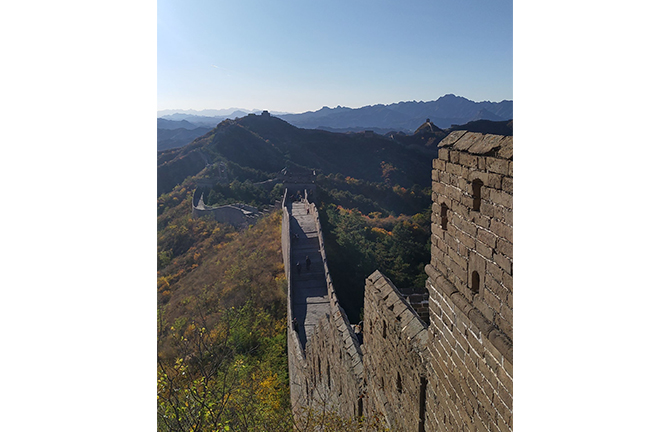History of the Great Wall

The Jinshanling section of the Great Wall at Luanping County, Hebei, built during the Ming Dynasty Photo: Zhan Chensheng/CSST
China’s Great Wall dates back as early as to the Spring and Autumn period. During that time, various states built fortresses, beacon towers, and outposts along their borders to defend against enemy states or nomadic tribes. These defensive facilities were gradually connected with walls, forming the prototype of what would later become know as the Great Wall.
After unifying China in 221 BCE, Qin Shi Huang ordered the construction of a new bulwark on the foundations of the pre-existing walls. Hundreds of thousands of laborers were mobilized for this monumental project, which linked together the existing walls to form a unified defense system stretching from northwest China to eastern Liaoning Province. This structure came to be known as the Qin Great Wall. Distinctive from the Great Wall as we recognize it today, the Qin Great Wall stood at a slightly shorter height of approximately 4 meters. Moreover, due to technological limitations at the time, rammed earth was predominantly utilized in its construction on a large scale.
The Han Empire rebuilt and repaired parts of the Qin wall and constructed new sections, extending the defense line to the Hexi Corridor. They increased the number of beacon towers, outposts, and fortresses, strengthening the military defensive capabilities of the Great Wall.
After the Han Dynasty, bricks were increasingly used in the construction of the Great Wall. The Ming wall is considered the culmination of the Great Wall constructions, featuring a walkway width sufficient to accommodate two horse-drawn carriages marching abreast. The Ming wall originates in the east from Hu Mountain in Liaoning and extends west to Juyong Pass in Beijing, with another section stretching from the Qilian Mountain to Jiayu Pass in northwest China. Ming builders used rammed earth as the main material for the walls west of the Yellow River, while extensively utilizing bricks in areas east of the Yellow River in Shanxi, resulting in the creation of numerous brick sections of the Great Wall.
Edited by REN GUANHONG
